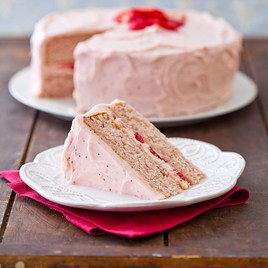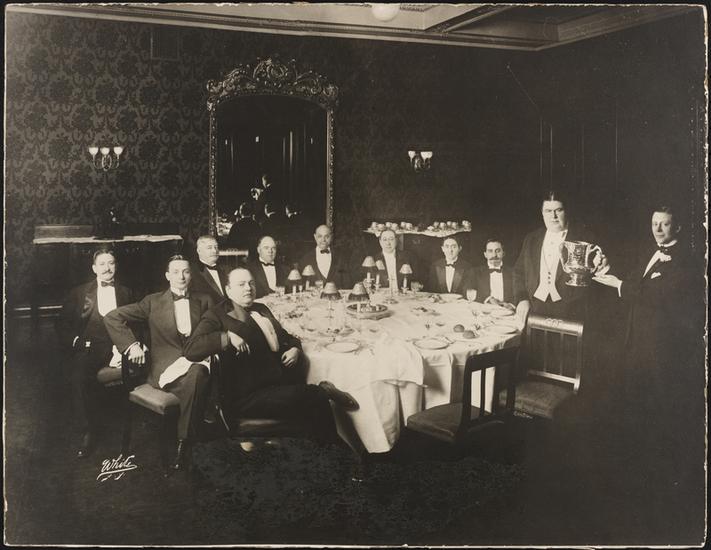
If you are reading the GQ series, you will no doubt have noticed that there are a lot of mentions of food Henry is eating. He eats huge breakfasts, is presented with lavish smorgasbords at lunch, is served haute Victorian cuisine for dinner, and sneaks downstairs at night for extra cake. He eats large quantities of a great many things, and Martin is just as voracious. I grew up with a skinny brother who did nothing but eat, so it seems entirely realistic to me that teenagers would put away such epic quantities of food without noticeable effect.
FOOD TIMELINE: If you’re a writer, or if you’re just interested in food history, you need to know about the Food Timeline. It was extremely helpful to me whenever I was smart enough to use it. You can find out when people started eating different foods, how they prepared them, and when they became commercially available, among other things.
ETIQUETTE of DINING: I researched how food was served in the households of the rich–the robber barons and socialites–and it seems that generally people ate breakfast buffets, dinners in formal courses, and luncheons served either way. Dinner at home would be a formal affair, but perhaps not the most formal, and that would be reflected in the diners’ dress. Henry and his father wear dinner jackets at home, though Mr. Blackwell wears a tailcoat when he dines out. Just FYI, in the Blackwell household, dinner jackets go with black waistcoats and black ties, never white. Here’s some info on dinner jackets, in case you’re curious.
SERVICE À LA RUSSE: The way food is served in the Blackwell and Wilton houses is à la russe. This just means that the food is served in sequential courses, more or less like we receive food in restaurants today. This was a change from service à la française, where several dishes were brought out at once. Service à la russe was introduced to France in the early 1800s by the Russian ambassador and the practice spread from there. In service à la russe, the diner would either be presented with a portion of food on a plate, or offered the opportunity to serve him or herself from a serving dish. At the Blackwell house, Henry is presented with food already portioned; at Christmas at the Wiltons’, he serves himself from dishes brought to the table by the Wilton slaves. Mr. Blackwell likes formality; the Wiltons are more relaxed.
SANDWICHES: Instead of layering sliced meats with sliced cheeses, cooks circa 1900 liked to mince everything together in a grinder and spread the resulting smoosh on bread. Think deviled ham, except with maybe olives ground in, or cheese, or boiled eggs. It really seems like a lot of unnecessary work, assuming that the person eating the sandwich is capable of chewing. Here are many examples of fussy Victorian era sandwich recipes featuring minced/ground ingredients.
RECIPES, MENUS and RESTAURANTS: Again, a wonderful resource for writers: The New York Public Library’s menu collection. I don’t go into much detail about the Blackwells’ dinners, but what detail there is comes from representative meals from menus of the period.
This cookbook, The Epicurean, from 1894, was written by Charles Ranhofer, the chef who made Delmonico’s (see below) great. Many of the dishes described seem unnecessarily fussy to me, but I do imagine they were elegant.
Everything at The American Menu is fascinating, but The Cafe Martin‘s menus and the descriptions of the atmosphere and patrons are representative of the sort of restaurant Mr. Blackwell takes Mrs. Murdock to, and that Henry will go to when he’s a bit older and more independent.
Delmonico’s is also representative of the kind of place Mr. Blackwell frequents. Delmonico’s was one of the top restaurants in the country in 1900. Delmonico’s is believed to be the first American restaurant to offer dining à la carte. There is a menu from 1899 at the link that will give you an idea of what rich people ate for pleasure, which includes four different kinds of duck plus unspecified duckling.

The photo above shows Diamond Jim Brady and cronies at Delmonico’s in 1905, and I imagine Mr. Blackwell has many evenings that look like this.
(Note that all the men are in black tie. It’s possible that if they’d had female company they’d have been in full dress/white tie instead, but a “stag” group would be considered less formal.)
Mr. Blackwell goes out to a restaurant for dinner on Thanksgiving (presumably with Mrs. Murdock), and dining out for the holiday was common practice for fashionable people.
Speaking of Thanksgiving, here’s this: Thanksgiving Maskers. What we had before we had trick-or-treat.
MACARONI and CHEESE: This is where I was not smart enough to use the Food Timeline. Sadly, Henry and Martin would not likely have been eating what I think of as macaroni and cheese in 1900. I included it in the books on the incorrect (and hopeful) assumption that mac & cheese has always been a constant in the universe, but elbow macaroni was sold in the U.S. beginning in 1900. However, if a reader is willing to accept the notion of slavery in the 20th century, I suspect that reader is probably also able to accept inaccurate depictions of pasta.
KITCHEN STAFF: One thing I regret a bit is not giving Cook more help in the kitchen. She’s cooking for 31 people (including herself) every day and she’s only got two scullery maids to help. There probably ought to have been a chef (male, of course) and another scullery maid or two, but by the time I’d decided she would have really needed more help, I also felt like the Blackwells already had more than their share of slaves, and I didn’t really need more kitchen characters in the story.
Based on the above, you might reasonably assume that I’m especially interested in food in my everyday life, but I’m not. I eat basically the same thing every day. I like other foods, but I don’t like them enough to want to cook them. I don’t enjoy cooking, so I stick to simple things: steamed veg, fried eggs, peanut butter on bread. Oh, and cheese. Lots of cheese. I’ve done the math, and I eat as much cheese as a French person. I enjoy baking every now and then, but even so I usually get all the year’s baking urges taken care of over a couple of hectic weeks. The Mr. does most of the cooking in our house. I am lazy and not particularly domesticated…but I love research and history :D

